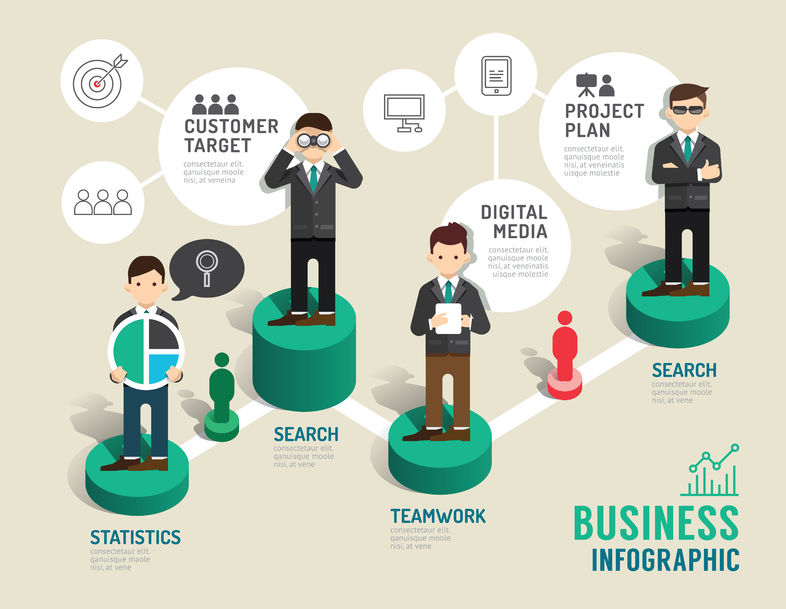7 Basic Steps to Setting up Business in Another Country
These days, the world has become a global village. With that in mind, choosing to shake things up, move abroad and start a business far from your native country does seem like a very reasonable idea. However, no matter how the rise of digital technologies made the world smaller, the national borders, different cultures, and various regulations are still there to make the life of expatriate entrepreneurs very challenging.
Sure, things may look the same on the surface but it takes only one ill-advised business move to prove us wrong. But these obstacles are far from impossible to overcome and the success of your ex-pat company will ultimately depend on your strategy, knowledge, and good decision. Let’s see if we can help you along the way.
Research the local business environment
Running a company means leveraging countless different factors most of which are not under your direct control. Understanding these circumstances will help you articulate your portfolio and business model and adjust them to the local political and economic environment. So, put as much effort as you can into understanding the local regulatory climate, political history, economic potential, cultural differences, and the previous COVID-19 containment measures. Knowing these things will help you anticipate the moves of the local government and set up the contingencies for the eventual fluctuations.
Turn your anticipations into clear actionable objectives
First and foremost, you need to have a clear idea about why you are exactly moving abroad and what do you want to achieve once there. Once you determine these overarching goals, you will have a much easier job identifying short-term objectives that will, step-by-step, lead you closer to the finish line. Also, being aware of these objectives will help you make more informed decisions in regards to the tasks like narrowing down the business location, deciding on the business structure, crafting a branding strategy, etc. All these moves need to be driven by the goals you have set before moving.
Set up the infrastructure for effortless collaboration
Taking into consideration you are probably close business ties with the native country and hire labor all around the world, you need to have the tools that will render regional differences nonexistent and allow effortless collaboration. Be sure to pay attention even to the smallest details. For instance, the Gmail CRM famously doesn’t have a feature for mass-sharing the Gmail contacts across the profiles which is essential for effective CRM. So, you will probably need to get a third-party plugin that makes it possible to share Google contacts between users. The more details like these you manage to cover, the better.
Figure out the financial infrastructure
Depending on the country where they moved to, the expatriates may have a legal status that cuts them off from the traditional financing channels. Although these problems can be solved by partnering up with the local entrepreneurs or relying more heavily on investors rather than financing institutions, you need to have these foundations laid out before moving on to any legal procedures or immediate plans. The same can be said about taxes, payroll, and other important business facets. If possible, you should leave these tasks to local third-party vendors and focus on the tasks that are making money.
Set up the startup budget
Now that you have all these things covered, it is finally time for putting together the startup budget. To do that you will need to take into consideration the following factors:
- Available financing options
- Liquid and non-liquid assets
- Expenses you need to make before launch
- Fixed costs (mortgage, payroll, benefits, etc.)
- Variable costs (raw materials, equipment, utilities, etc.)
- Estimated monthly revenue
If possible, your budget should cover the six months’ worth of expenses to make sure your company has enough time to branch out and establish an initial customer base.
Assemble a team of prospective local talents
Like all other companies, your startup will probably heavily rely on outsourcing and foreign labor. Still, if you want to truly make an impact on the regional market, the core of your company should be comprised of prospective talents with good connections in the local business community and excellent knowledge of the local climate. Also, assert strong leadership and fill in the senior positions with people who will be able to inspire loyalty, lead by example, keep an honest, transparent relationship with lower-level employees, and take into consideration the specific needs of the local labor.
Look for the support of the ex-pat community
Although you should avoid making your future company needlessly “ethnic” or oriented towards a narrow audience, spreading the word across the ex-pat community and making it a launchpad for your future efforts does seem like a natural move. Depending on the time you have spent abroad you have a reasonably developed list of contacts you can leverage for securing financing and establishing your initial customer base. It only takes a couple of clever guerilla stunts, strong social media calls to action, referral strategies, and similar marketing moves to turn this narrow pool into a fully developed customer base.
These few examples should give you a general idea about the obstacles you are going to experience when starting your future company and hopefully outline the steps you need to take to avoid them. Moving abroad always presents an excellent opportunity for a fresh start but the life of an expatriate also comes with various challenges. The success of your company will depend on your ability to find a path between these two extremes.










